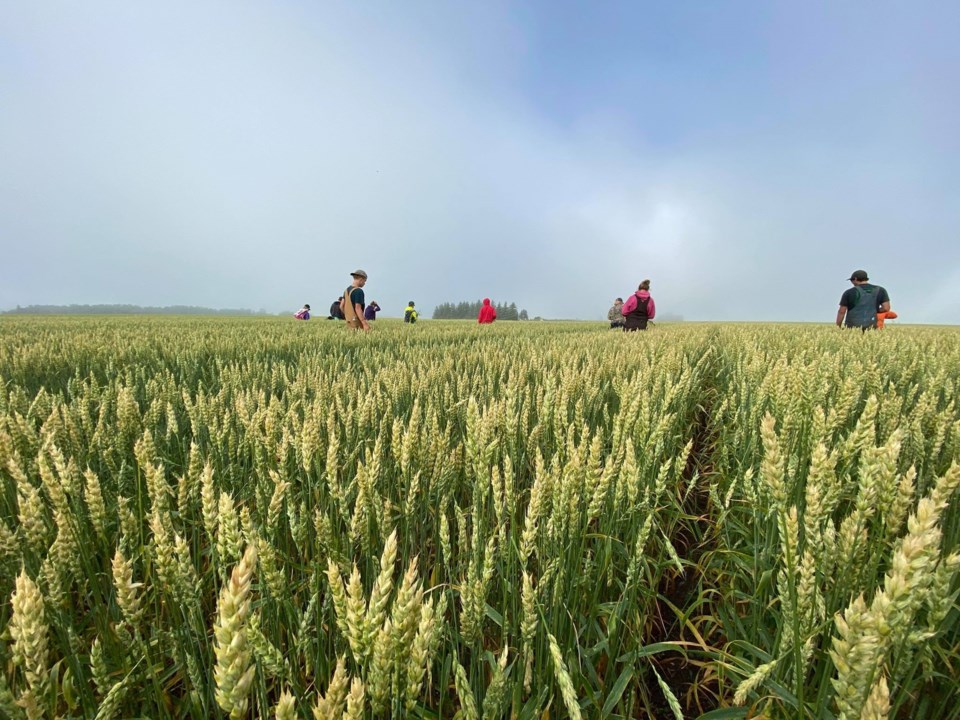Millions of acres of canola and wheat growing in Saskatchewan under recent hot, dry weather could be the first average harvest in years.
“We’re coming out of a really tough couple of years,” said Derek Dery, who runs a farm west of Saskatoon. An average harvest could be a relief after and
“I am very thankful for the crops that we have. It’s been one thing that I haven’t really been stressed out about,” Dery said, adding that he expects a modest profit.
On the whole, COVID-19 has generally been favourable for wheat, canola and pulse farmers as uncertainty leads governments and households to stock up. Neil Townsend, market analyst with FarmLink Marketing Solutions, said it’s unclear how long that will last.
Despite China placing restrictions on Canadian canola last year, he said exports continue, albeit at lower rates. That comes as a lower U.S. dollar possibly helps commodity prices, and as other buyers like the European Union import Canadian canola crops.
Wheat prices still aren’t as encouraging as prices for canola and pulses, Townsend said. He recommends farmers sell 50 to 60 per cent of those crops earlier than normal. Risk persists in the market and “a price you see today, that doesn’t need to be there,” he said.
That could mean recent prices like $11 for a bushel of canola were a strong level to begin selling new crops, noted Adam Pukalo, a commodities advisor at PI Financial Corp.
A volatile market means he recommends selling between a quarter and a half of new crops — although uncertainty has led some of his clients to resist committing to that.
“What happens if there’s a hail storm here in August and they’re locked in on those contracts?” he said.
One such storm dealt a blow to farmer Guy McCrea’s fields near Zenon Park, about 250 kilometres northeast of Saskatoon.
Earlier storm damage on his farm ranged from five per cent to 100 per cent. McCrea doesn’t believe those crops will recover before this year’s frost. While he kept most of his canola, he lost up to 30 bushels per acre.
“Optimistic? I wouldn’t say that. We’re hoping for a good below average crop,” he said. “(For) some of the fields, we’re hoping we can get back what we put into them.”
Devastating early season storms are a shared story across the Prairies this summer, said Rick Omelchenko, president of the Canadian Crop Hail Association. Saskatchewan wasn’t hit as hard as Alberta, but its losses still outweighed Manitoba’s, he said.
Damages likely equalled the five-year average after spikes in June and July, he added.
“The earlier the storms and the earlier the stage of growth, the less severe damage occurs that affects farmer yields. But from now on it affects it drastically. We’re getting some storms now that are just decimating all the crops.”
Other farmers like Hilda Tieszen near Hepburn, about 50 kilometres north of Saskatoon, questioned whether there will be reduced growth from lack of rain. The answer will wait until her farm starts harvesting next week, she said.
“We don’t know (how) the crops will turn out.”
The strength in commodity prices and demand for Saskatchewan farmers’ products could nonetheless remain positives for farmers like Tieszen, said Todd Lewis, president of the Agricultural Producers Association of Saskatchewan.
“The idea of an average cop is certainly there,’ Lewis said.
“It’s always the time of year where there’s a little bit of uncertainty. You don’t really know until the combines hit the field, just what your yield is going to be exactly.”




